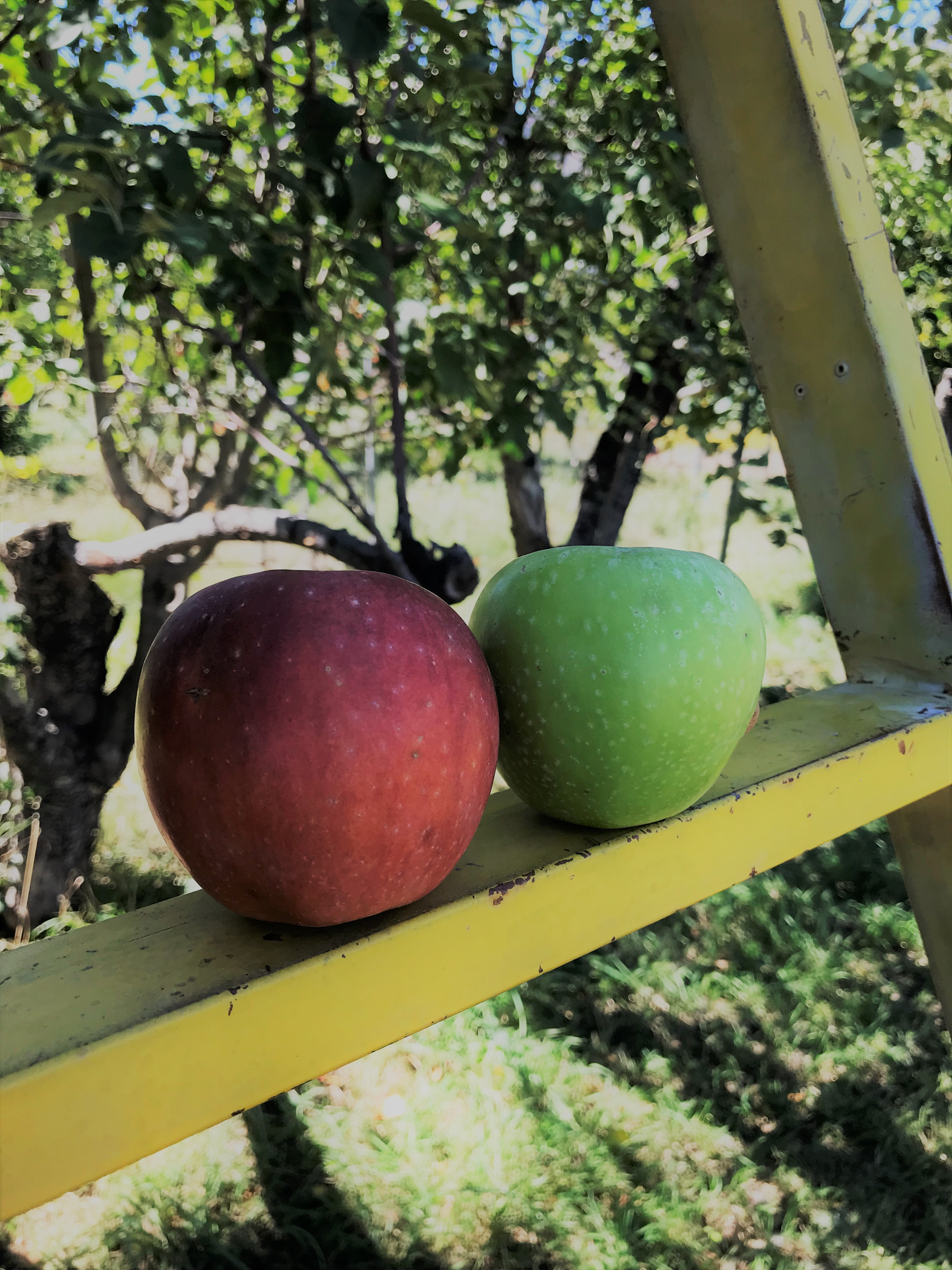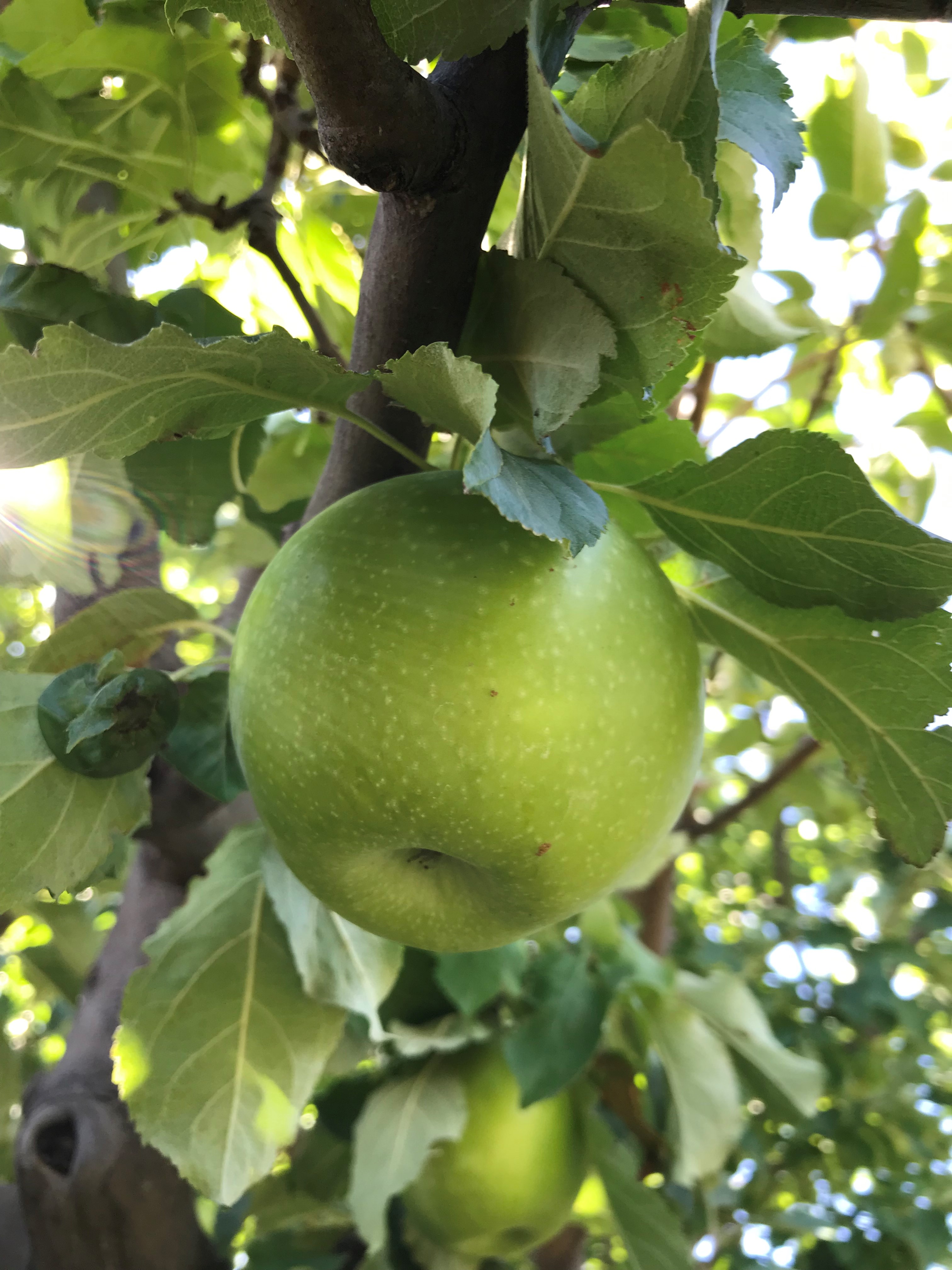Southwest Yard & Garden – Comparing Apples to Apples: The Variety Game


Apples of unknown origin grown and harvested in Mayhill, NM. Photo credit Amanda M.W.
-

Winesap’ and ‘Granny Smith’ side by side. Photo credit M. Thompson
-

‘Granny Smith’ apple in Portal, Arizona. Photo credit M. Thompson
-

‘Winesap’ apple in Portal Arizona. Photo credit M. Thompson
Question: We need help identifying this apple variety. Our tree was here when we moved in a little over a year ago and we don’t know what they are.
- Amanda M.W., Mayhill, NM
Answer: More than 7,500 named apple varieties are grown throughout the world today, over 2,500 of which are grown in the U.S. Even if we narrow that down to the 100 or so varieties grown commercially in the U.S., it can be very difficult to determine exactly which variety you are growing in your yard.
Even though apples are as American as apple pie and the crabapple is native to North America, true apples are native to central Asia and were introduced by the pilgrims in the Massachusetts Bay Colony.
Although I use the terms cultivar and variety pretty much interchangeably, they are distinct in the botanical and horticultural realms. Variety is a formal evolutionary classification (aka taxon) between subspecies and cultivar.
Flowering time and harvest time are traits commonly used to narrow down the possible varieties. Day-to-day weather variability and microclimate affect bloom times, but in relative terms, apples can be grouped into “late-blooming” or “early blooming” categories—similarly with ripeness. The University of Minnesota lists their apple cultivar releases as being ripe either early season (August), mid-season (September), or late-season (October). Flowering time is a more critical trait for New Mexico growers—as all too many apricot tree owners know—early flowering apple blossoms can be susceptible to late frosts, so the later blooming the better in our area. If your tree in Otero County produces reliably year after year, we can assume it’s a late bloomer, and that will help with variety designation.
In order to “stay true” to variety, apple trees are propagated by either grafting or budding, so the rootstock variety is different than the scion or top variety. To learn more about apple and other fruit tree cultivars recommended for New Mexico growers, check out NMSU Extension Guides H-307 “Rootstocks for Size Control in Apple Trees” (https://aces.nmsu.edu/pubs/_h/H307/welcome.html) and H-310 “Fruits and Nuts for New Mexico Orchards” https://aces.nmsu.edu/pubs/_h/H310/welcome.html.
Clicking around, I found a potentially helpful website that asks very specific questions about all sorts of apple characteristics with the goal of narrowing the list of possible varieties: http://www.applename.com/id.aspx. (Please note, I am normally reluctant to recommend “.com” links, but this particular resource lists several nonprofits as founders, doesn’t appear to be selling anything, and looks like a fun method. I’m curious to see what you find out.) This particular key starts out easy enough by asking about apple skin color, whether or not stripes are present, and, if so, what color. But then the questions get more detailed with about 20 more questions on blush, dots, etc. These are followed by questions about the stem and stem cavity that made me feel like I’ve never actually looked at an apple before. Still another 15 questions about the shape, contours, and colors of the underside or “basin” are listed before getting into the subtleties of juiciness, sweetness, seed size and count, and more.
If it’s really important to you and you can afford it, you can send samples off for DNA fingerprinting analyses at several hundred dollars a pop. I asked landscape designer Michal Glines of Tucson for her thoughts on deciphering apple varieties, and she suggested that if your tree produces well and you like the flavor, call it whatever you like and enjoy! If you’d like me to try the applename.com approach, send your apples to me at the NMSU Agricultural Science Center at Los Lunas, c/o “NMDesertBlooms,” 1036 Miller Road, Los Lunas, NM 87031. This “service” is free, but there are no guarantees.
For more gardening information, including decades of archived Southwest Yard & Garden columns, visit the NMSU Extension Horticulture page (http://desertblooms.nmsu.edu/), follow us on social media (@NMDesertBlooms), or contact your County Extension office (https://aces.nmsu.edu/county).
Marisa Thompson, PhD, is the Extension Horticulture Specialist for New Mexico State University and is based at the Agricultural Science Center at Los Lunas.
